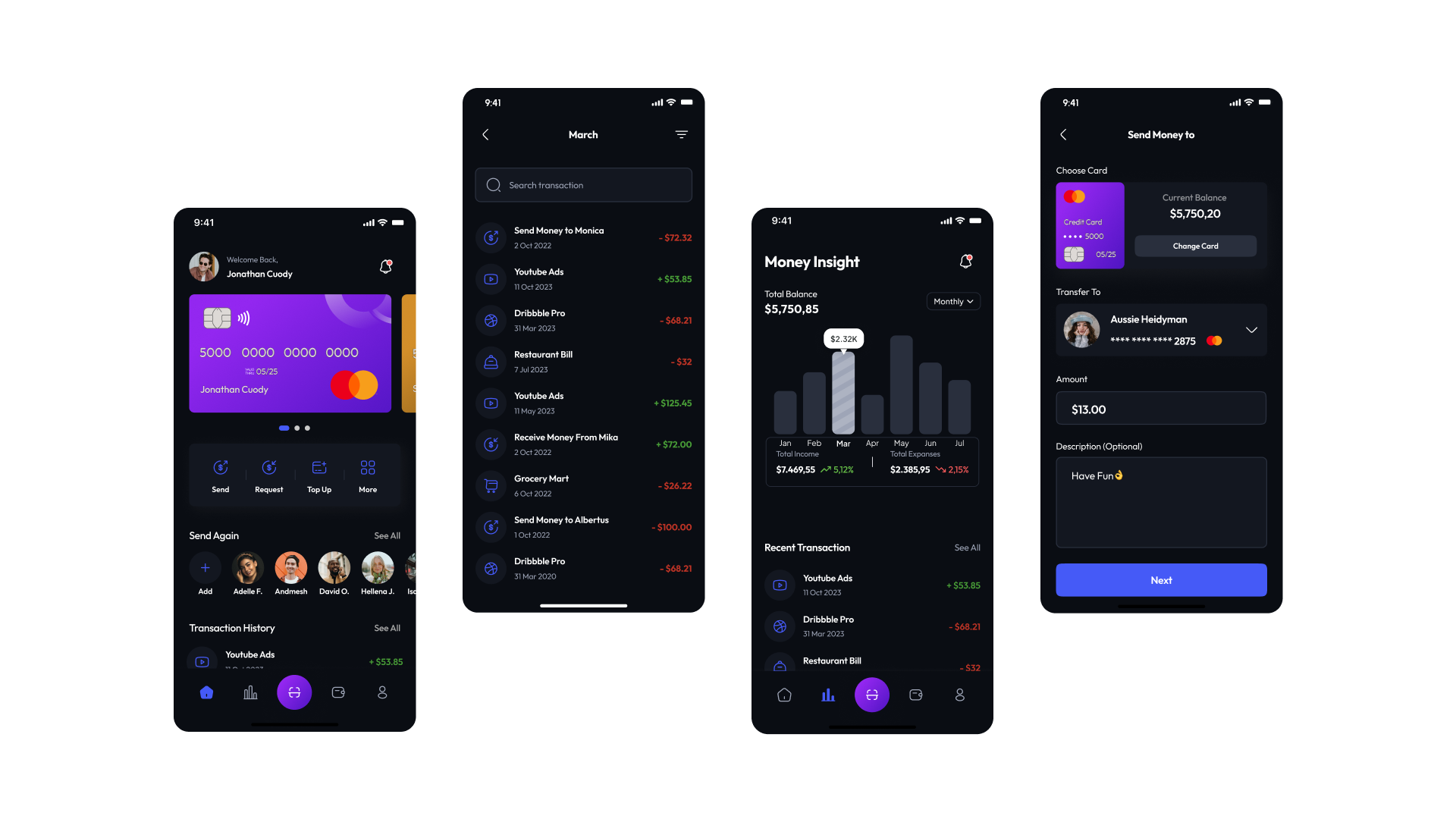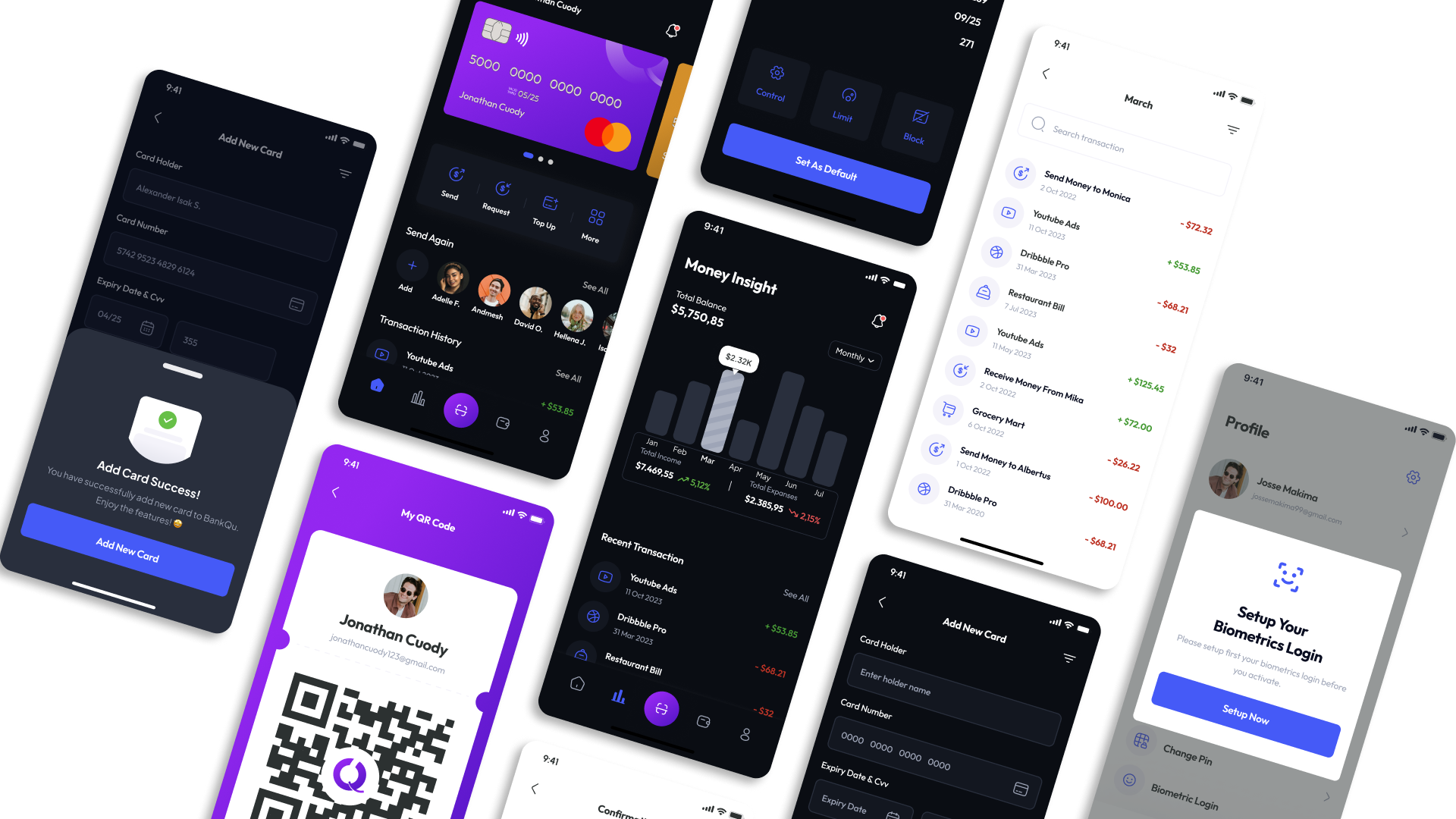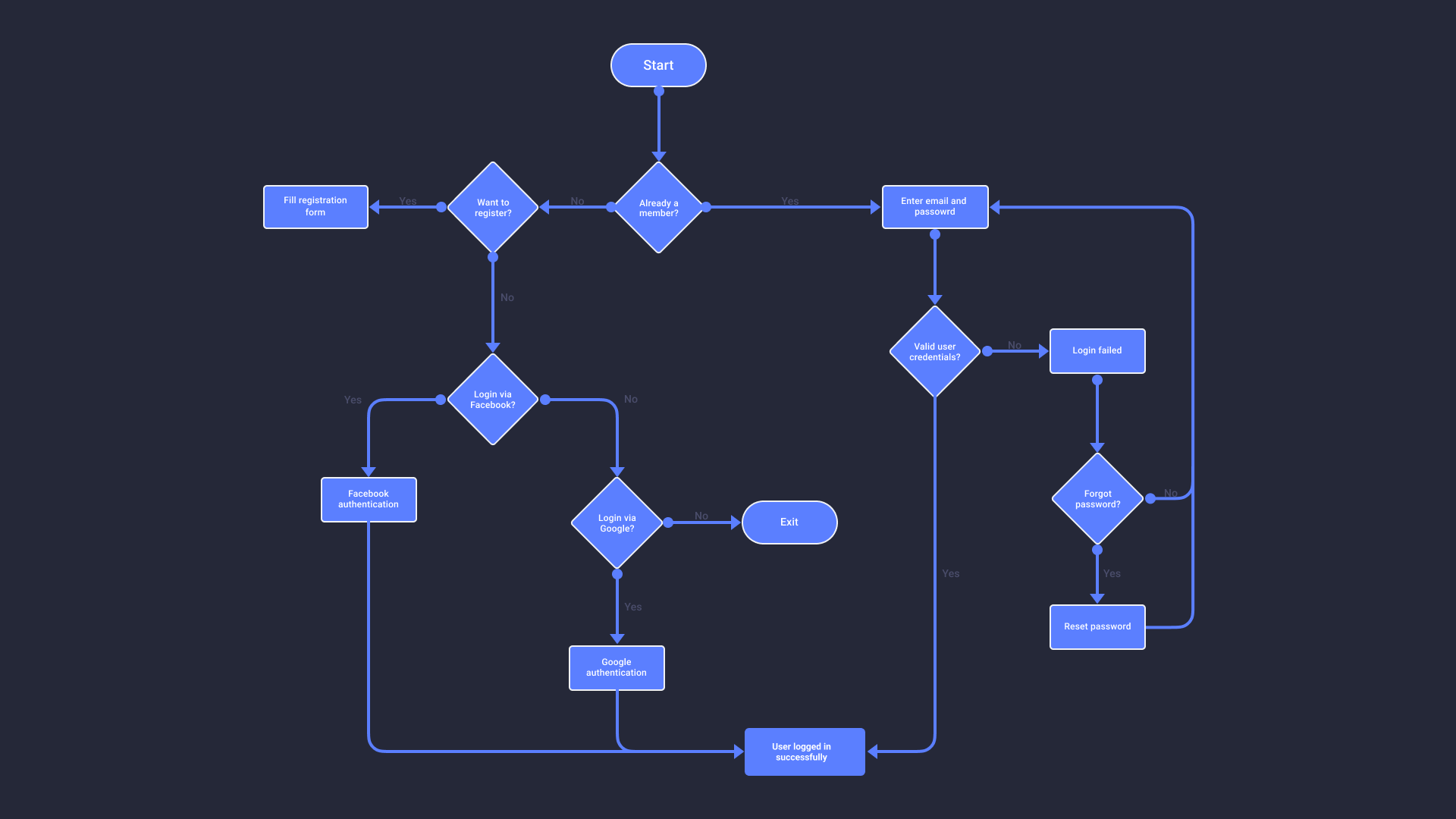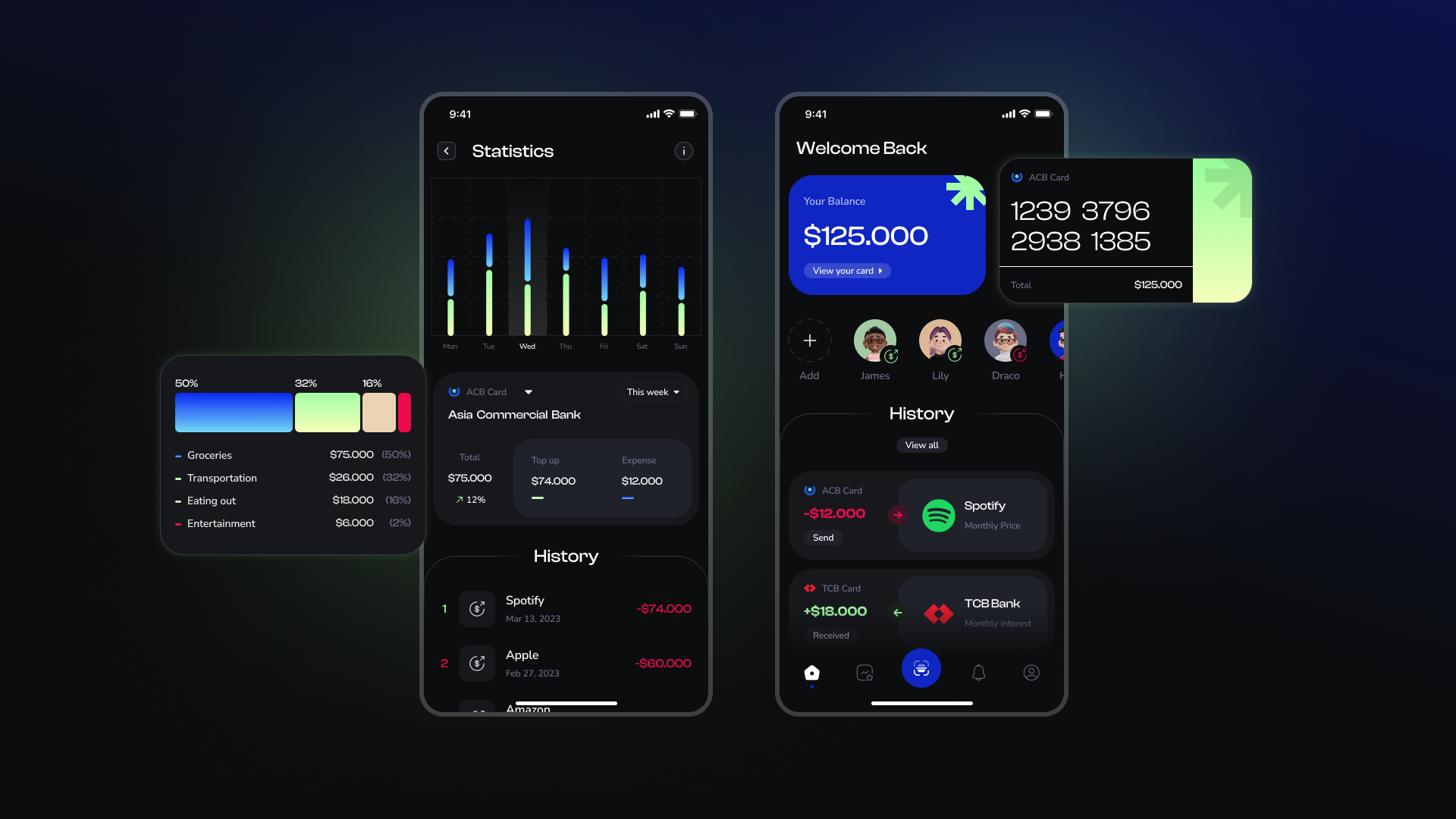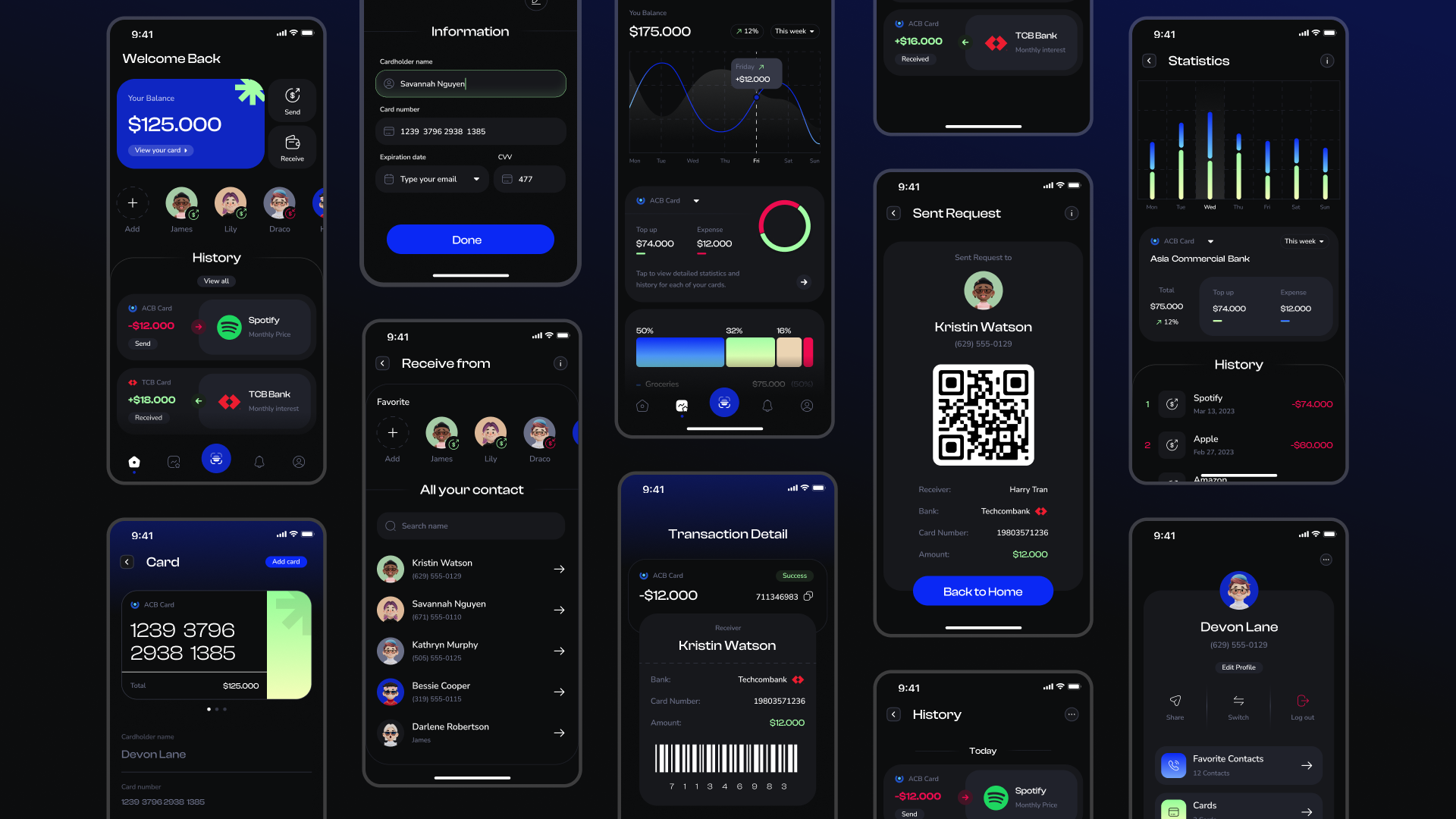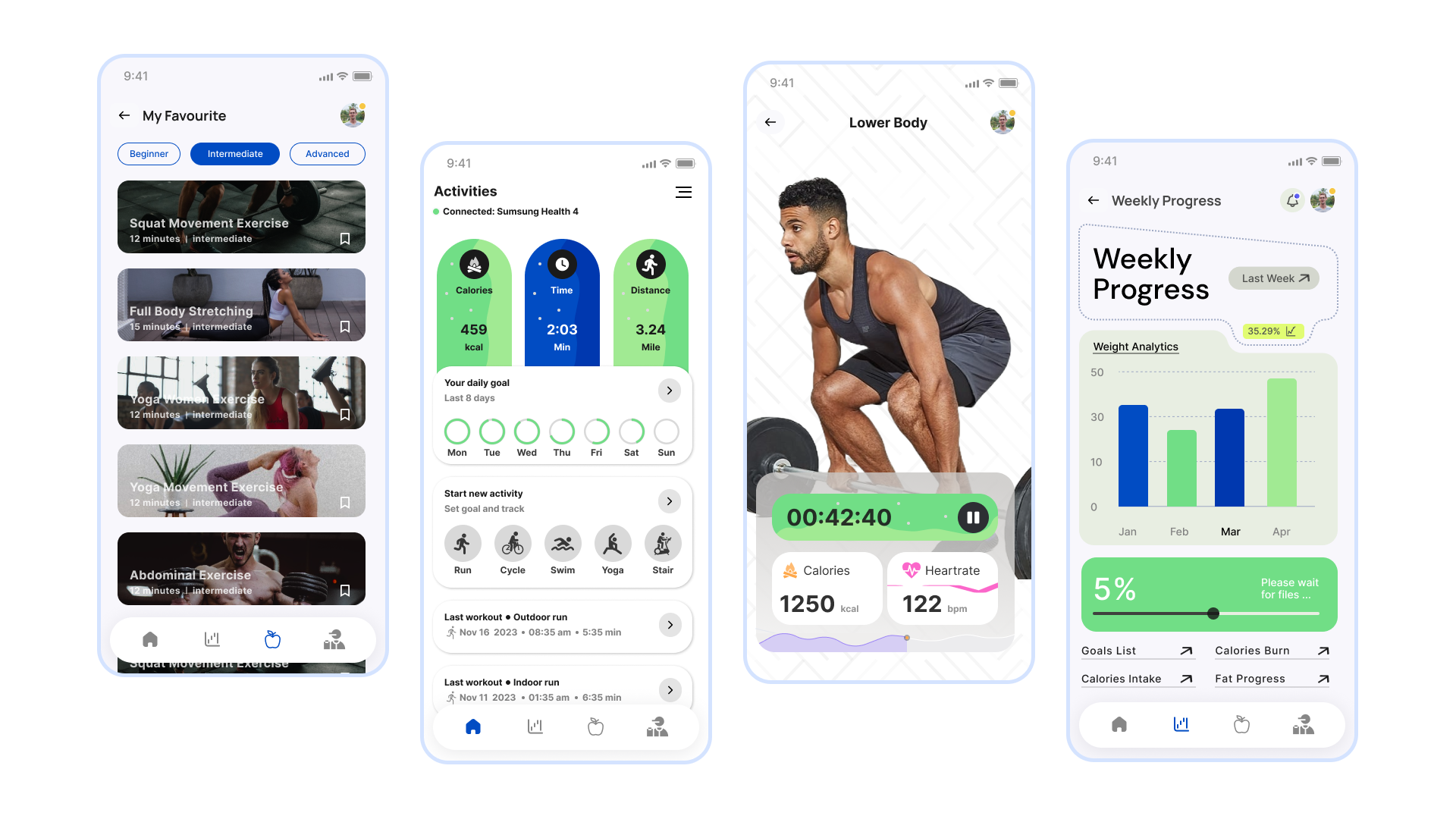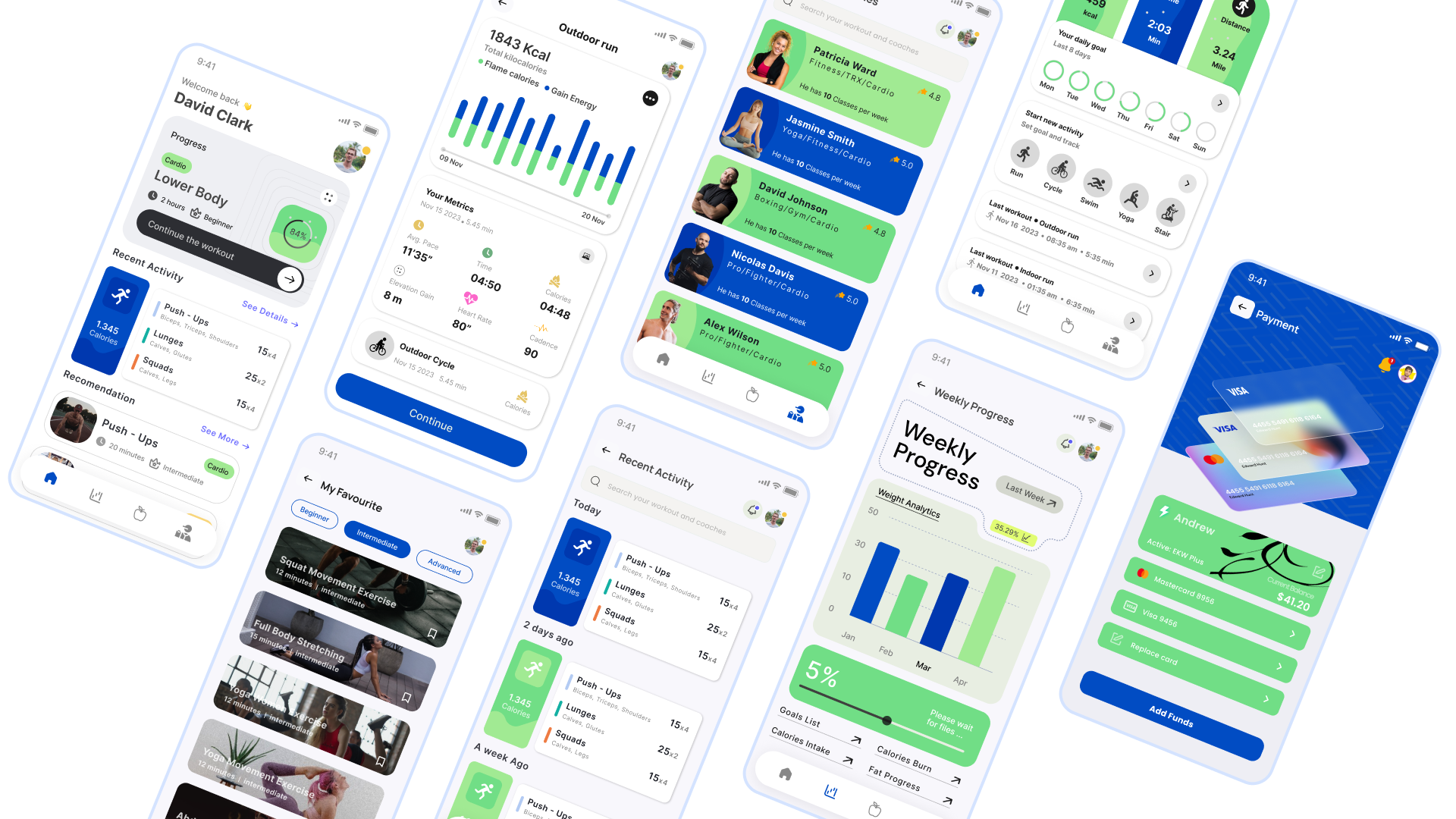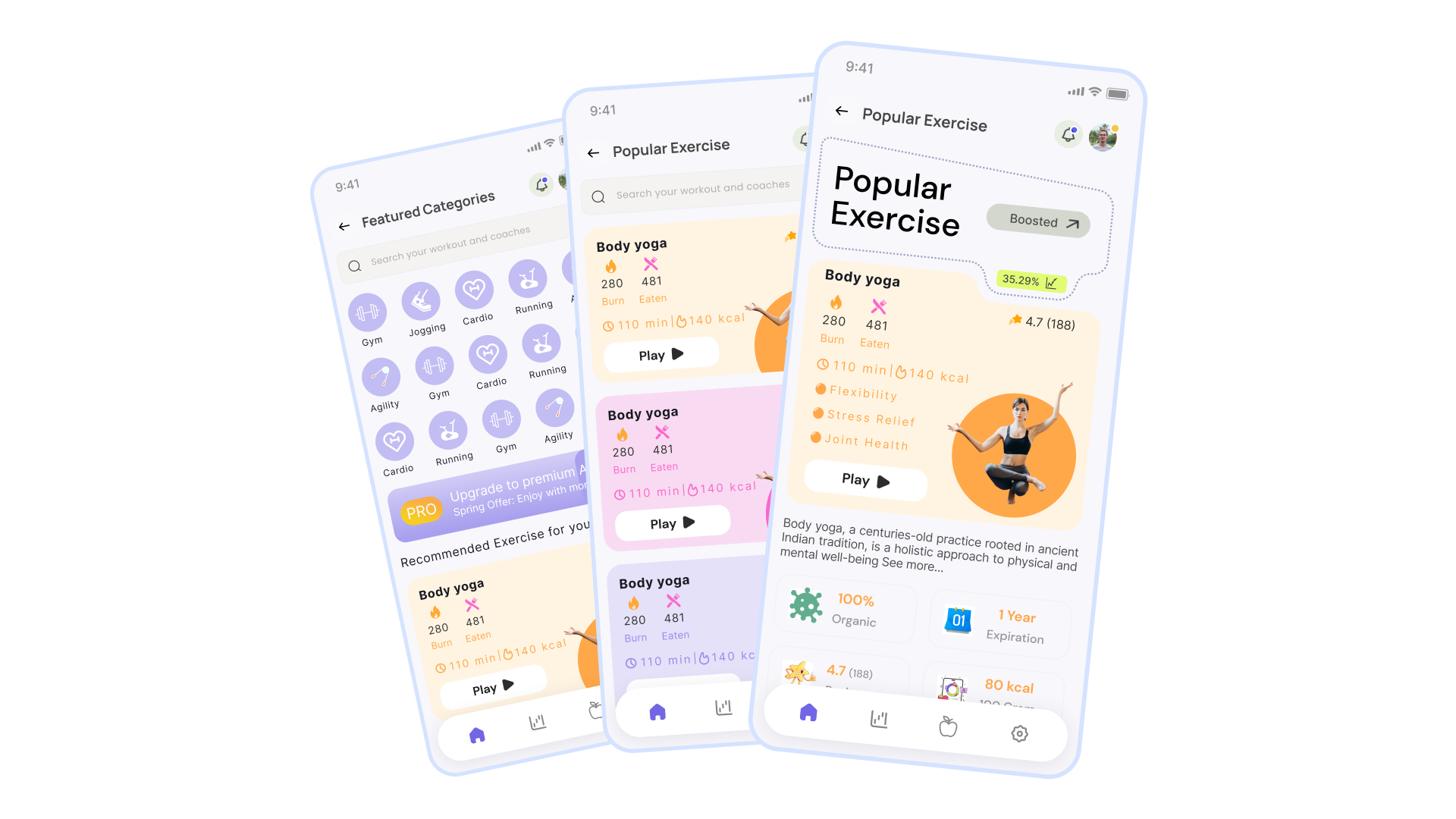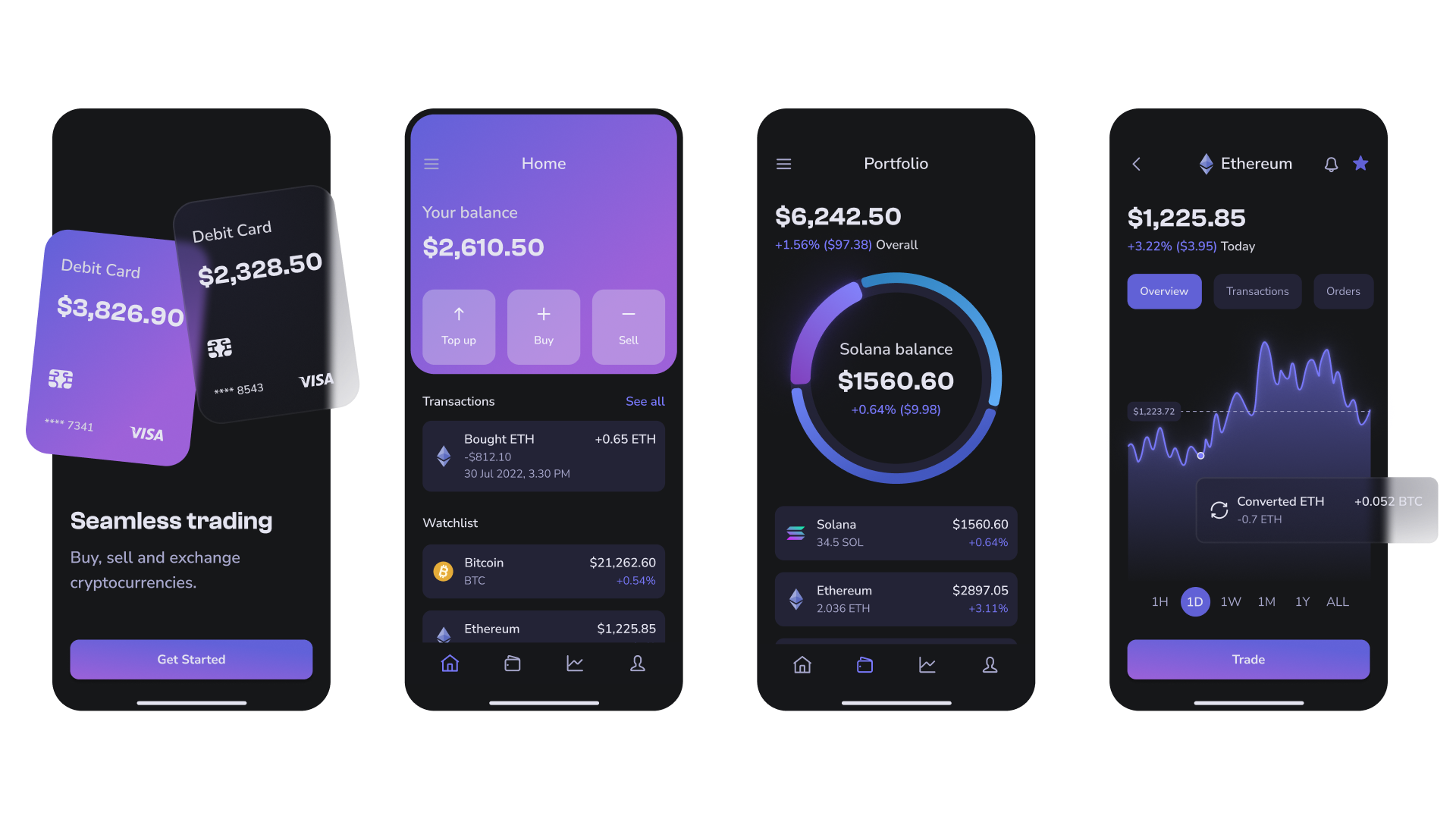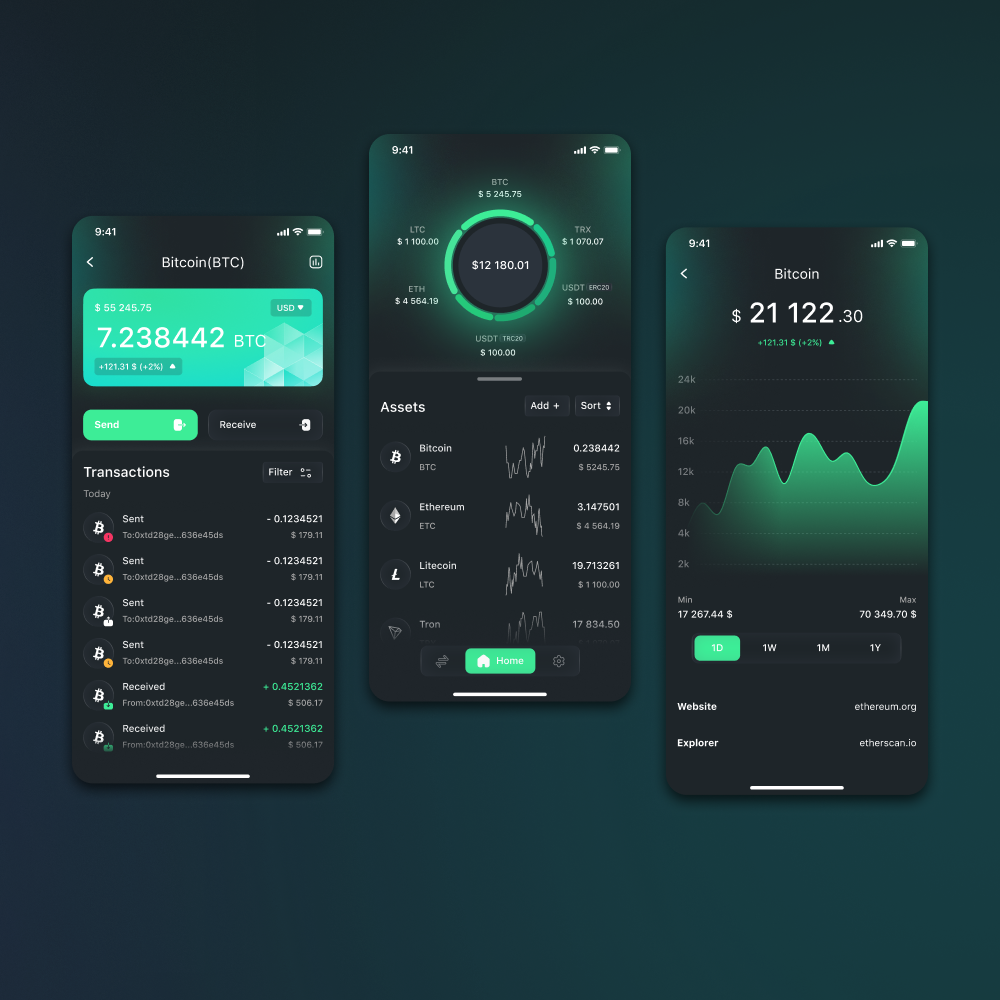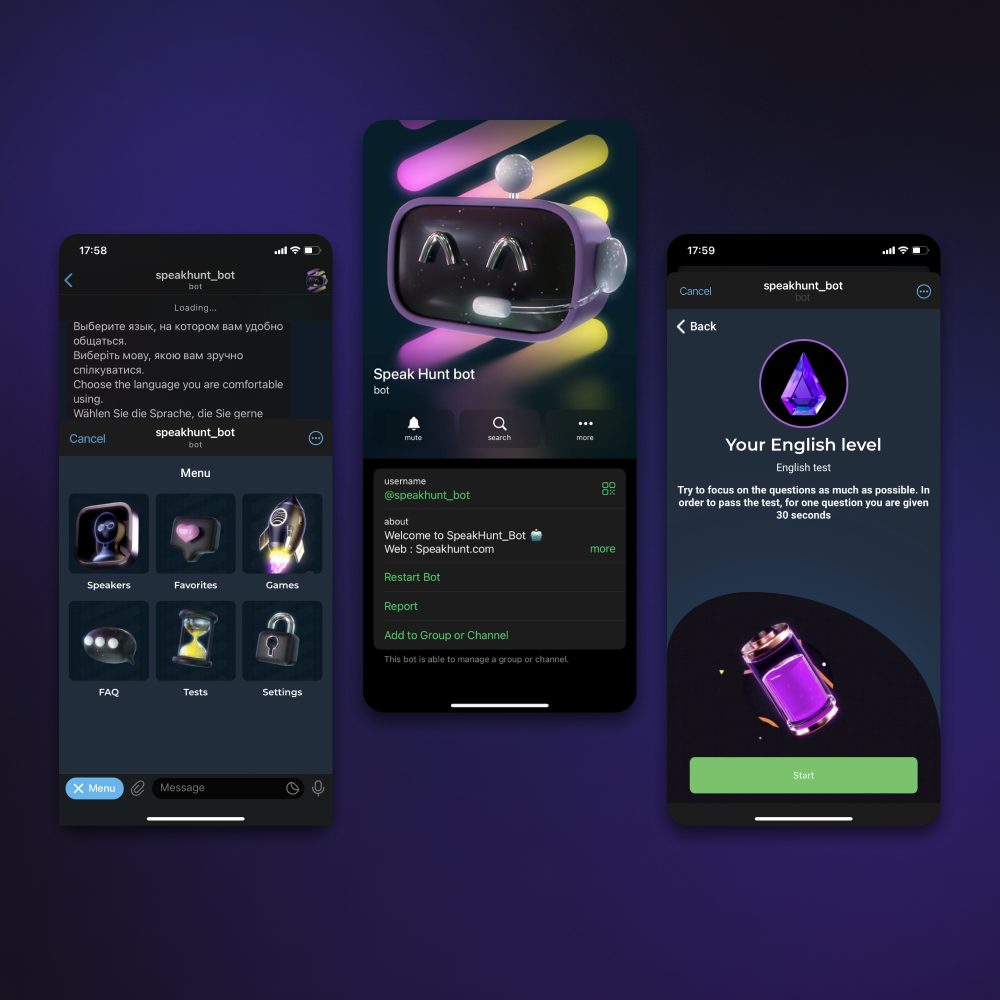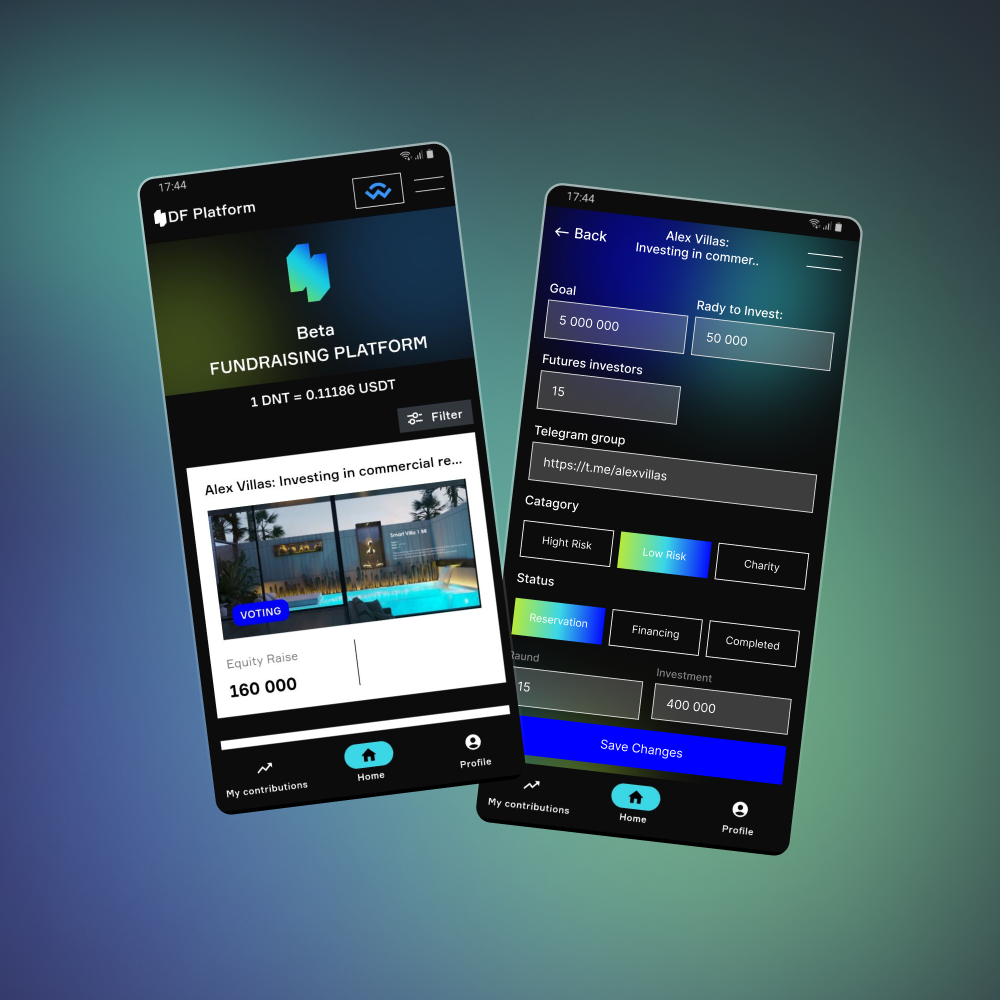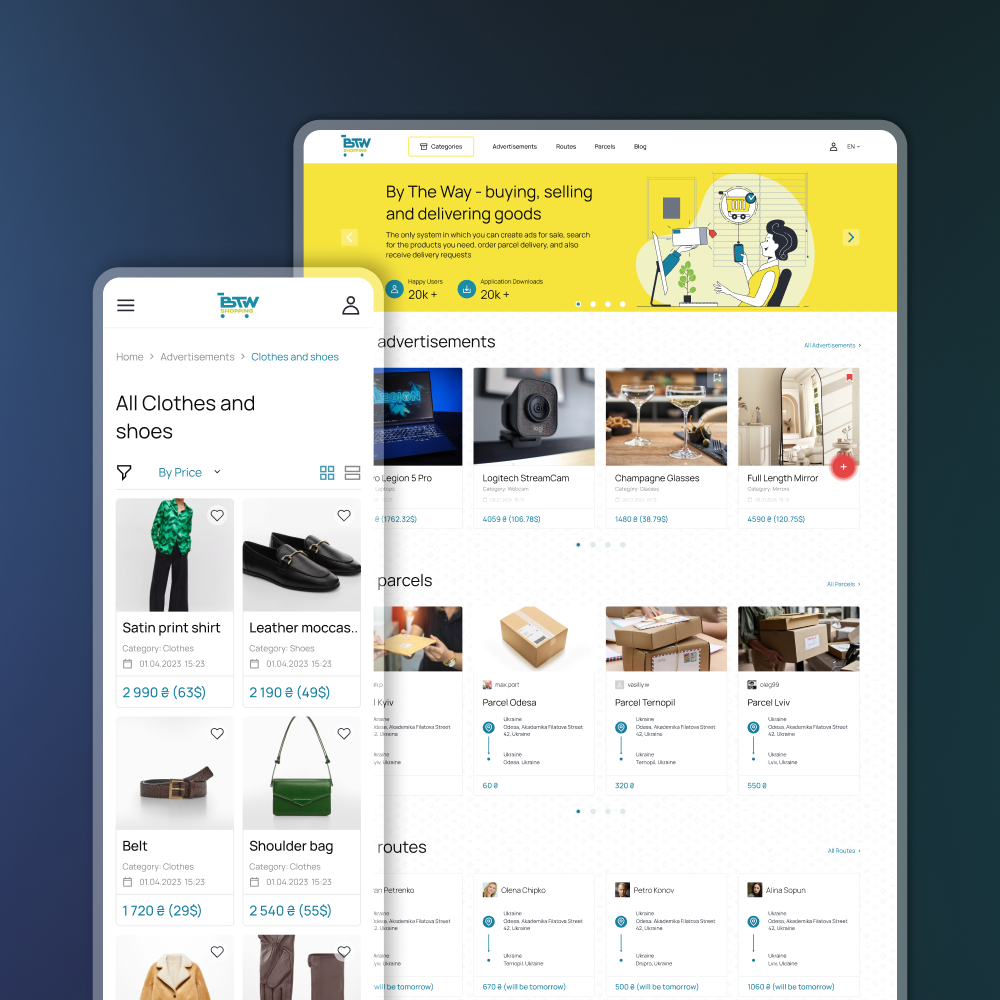








Mobile applications
Mobile application for business. Much more than an icon on the home screen of a smartphone.
A mobile app is the most popular way to shop online, according to the latest marketing research, and 97% of online shoppers in Europe can't be wrong. At the same time, mobile adaptation of sites loses to applications in the level of engagement and conversion, and this is why.
About 51% of users check their apps between 1 and 10 times a day, while conversion rates in mobile apps leave no chance for browsers - apps win more than seven times.
Moreover, a business with a mobile app gets a wider reach and flexible management of user engagement with push notifications and personalized offers. It is also worth talking about additional income, because in addition to profit from sales, a business can monetize a mobile application using advertising, paid functions or subscriptions.
The benefits of developing a mobile application are really obvious, but what are the stages of its development?
The main stages of mobile application development
Application development is an interesting process consisting of several mandatory stages, which always begins with the analysis and definition of a clear technical task.
1. Analysis
At this stage, the goals and tasks of the mobile application are determined, which it must solve:
- increase in sales;
- promotion of business products and services;
- increasing customer loyalty
- audience expansion.
Based on the customer's idea, our team studies the target audience, segments it into smaller clusters depending on business needs. They evaluate the advantages of the product and predict its expected demand in the market.
Analysis is always about an effective synthesis of the customer's ideas, business needs and current trends in the mobile application market.
Result: The niche and the idea of the future mobile application are known, development markers and tasks that will solve the future software are defined.
2. Technical tasks
A framework for application development of a mobile application, which involves close work between our team and the customer. The technical task contains a detailed description of all requirements for the application, its functionality, design and other aspects of development. This document is drawn up with maximum detail, which minimizes risks and ensures the successful development of the project.
Result: Defined and documented requirements for the application, its functionality and design.
3. UX design
Having received a sufficient amount of information at the stages of analysis and formation of the technical task, our team begins prototyping the future application. At this stage, designers, marketers and developers visualize the concept, its structure and interaction with the user.
The prototype includes the creation of the first drafts of the interface design, the development of screen layouts and the formation of the overall architecture. The prototype allows you to see the concept of the application live before the start of its full development.
Result: The first wireframes are created, which means that there is already a sketch of the future application with low fidelity and no design.
4. Creating a design
It plays a crucial role in creating an attractive and user-friendly interface. At this stage, we work out the usability of the interface (UX), general aesthetics and style that holds the user's attention (UI), analyze competitors for a more profitable reconstruction in the business niche.
The result: wireframes have already received their first design, UI kit and clickable prototypes.
5. Development
Based on the solutions, experience and feedback we received at the prototyping stage, developers start writing the application code, create the necessary functionality based on the selected stack, configure interaction with databases and external services.
Result: the application is already developed and ready to be transferred to testing, where it will be checked for errors and bugs by QA.
6. Testing
At this stage, the created application is checked for errors, bugs and vulnerabilities using different methodologies and types of testing. Found inaccuracies in the operation of the application are sent back to the developers, corrected and undergo another round of checks until the application meets the appropriate level of quality.
The result: the application has a high level of quality and works without errors.
7. Release: uploading to stories
After the complete development cycle, the created application is uploaded to the App Store for iOS or Google Play for Android. At the same time, if the operation of the application involves a client-server architecture, it must be deployed on servers. The release process takes some time, so it consists of several stages:
- compliance check: application icon design, description, screenshots and videos, privacy policy, etc.;
- filing an application and waiting for approval;
- as soon as the application is published, it becomes available to all users.
Result: the finished application can already be downloaded in stores.
8. Support and development of the project
Any application, after uploading to the site, always requires support, which includes the release of updates and improvements to the application, its adaptation to changes in the niche and user requirements, solving problems and questions that arise when using the application.
The technologies we use to develop the mobile application
In their work, Avada Media developers use a stack of technologies that are suitable for developing mobile applications for IOS and Android.
Android and Kotlin
For Android software development, our developers use Kotlin. It is fully compatible with Java, which means it can be used in apps, backend, web, and even on the desktop. As Andrii Breslav, the author of the language, says: "Kotlin is a language for all platforms." We agree that it is, and here's why:
- for mobile applications, the code is written in Kotlin "cleaner" than in Java. One line of Kotlin code can fit 18 lines of Java. Less code - faster development and faster release of a new app in the story.
- simplicity of the code - simplicity of editing. And this is another position to increase the output speed of the application.
At the same time, Kotlin and Java can be used together, which allows you to implement all the advantages of these two languages in one project.
SWIFT and IOS
When developing on IOS, developers use the SWIFT language. The main advantages of this language are simplicity, speed and security. Introduced by Apple in 2014, SWIFT became the flagship of mobile application development on IOS, because it:
- optimized for the development of complex business applications;
- allows you to see the result of the code immediately in the "sandbox" without the need for constant compilation;
- has many functions for memory management;
- got a cleaner syntax compared to Objective C.
Team, values, innovation - 3 main principles of successful development
We innovate in every application. Using a stack of popular, in-demand technologies and innovative approaches in software development, we help our partners and customers develop the optimal solution to achieve business goals, based on the optimal ratio of price and quality.
We are sure that successful projects are created only by a team. With more than 10 years of experience in the development market and more than 100 developers on staff, we are ready to offer IT solutions for any business.
At AVADA MEDIA, you will find senior and middle level programmers who have experience working on large-scale projects. Depending on the complexity of the project and the scope of its development, we can provide for the project both individual specialists and whole coordinated teams for mobile development. Such teams consist of several specialists who close the full cycle of mobile development for their schools:
- project manager (PM) for team coordination and communication with the customer, mobile-developer for software code implementation;
- UX/UI designers to create a convenient and aesthetic interface;
- Quality Assurance specialists who will check the received product for compliance with quality standards.
Teams work using the SCRUM methodology. The project manager, as well as the customer, have full control and awareness of each stage of development, while the team has enough free space to make local decisions.
SCRUM also involves the decomposition of large tasks into smaller ones, which are included in sprints - time segments into which the entire development is divided and during which the team must achieve certain results.
FAQ. Popular questions about mobile application development
1. What is turnkey mobile application development?
- This is a convenient delegation of IT company project development. You talk about the features of the project, the idea, expectations from it. And we select specialists and a team to implement the project. At the same time, you have development control tools and constant communication. While you're busy growing your business, we're building an innovative app that's equally useful for your team and your customers.
2. Which companies need a mobile application?
- The mobile application will be useful for all companies that want to develop their business, increase customer engagement and loyalty. For business customers, the mobile application simplifies the process of purchasing a product or service, allows you to provide personalized offers, attract the audience with various offers and promotions. For business employees, the mobile app will help to optimize the accounting of goods and more conveniently monitor their availability, facilitate the delivery of goods, etc.
3. How much will the development of a mobile application cost?
- You can calculate the cost in a special section of our website. To do this, you will need to select a team of developers, provide a brief description of the future project and specify the desired terms for development. After preliminary calculations, we will contact you to discuss the project.
4. How long will it take to develop a mobile application?
- It all depends on its complexity and requirements for its functionality, choosing as a basis a ready-made design template or creating it from scratch, on the platform and operating system for which it is developed. To find out the details, contact our experts and we will tell you all the details.
5. Do I need to sign an NDA for project development?
- Yes, we may sign a non-disclosure agreement in the initial stages. We have everything for this.
















